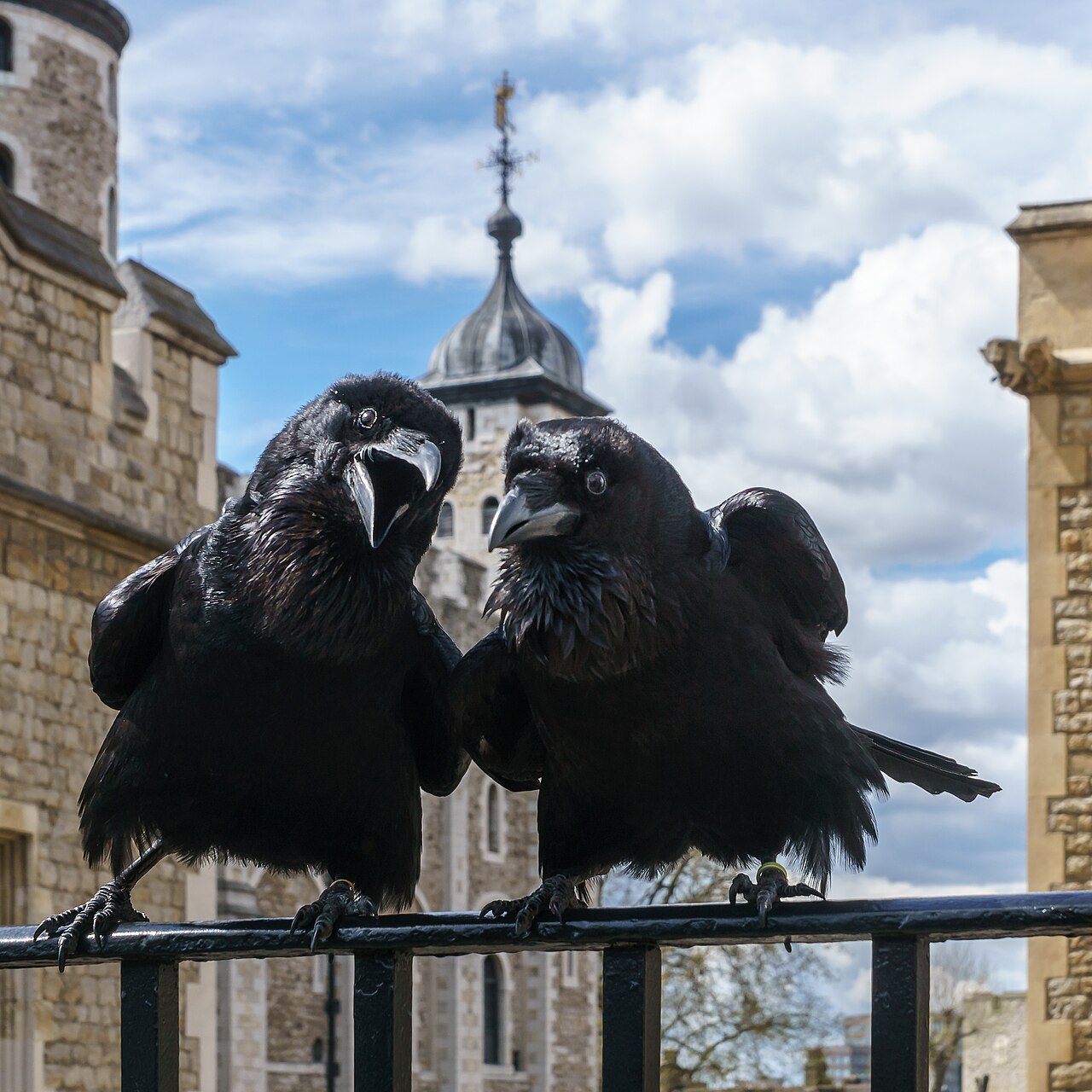Ravens of the Tower of London

The ravens of the Tower of London are a group of at least six captive ravens, with nine reported in 2021, that reside at the Tower of London. Their presence is traditionally believed to safeguard both the Crown and the Tower. According to legend, if the ravens are ever lost or fly away, the Crown will fall and so will Britain. Some historians, including the official historian of the Tower, believe that this raven mythology likely originated in the Victorian era and is more fanciful than historical. The earliest known depiction of captive ravens at the Tower appears in an 1883 illustration.
Wild ravens were once common throughout Britain, including in urban areas, and the Tower lay within their natural range. After their extermination from much of the country, including London, ravens could only remain at the Tower in captivity and with formal support. Today, the Tower's ravens are cared for daily by the Ravenmaster of the Yeomen Warders, who leads a team known as the Ravenmaster’s assistants. Local tradition places the start of the captive raven population in the reign of King Charles II (1660 to 1685). Some of the Tower's ravens have been specially bred in Somerset.
The earliest known legend linking a raven to the Tower comes from a euhemerised Welsh tale about a war with the Irish leader Matholwch, who had mistreated the princess Branwen. Her brother, Brân the Blessed, King of the Britons, instructed his followers to cut off his head and bury it beneath The White Hill, where the Tower now stands. The head was to face France as a magical safeguard against invasion.
In Welsh, the word brân means "raven," and the creature's magical and protective qualities are well established in Celtic mythology. The belief that Brân’s head lay beneath the Tower would have served as reassurance of divine protection, similar to how the modern tradition of the Tower ravens functions. This suggests the origin of the belief lies in earlier British folklore.
Sir George John Younghusband wrote that at the execution of Anne Boleyn in 1536, the ravens sat still and silent on the battlements, eerily watching the scene unfold. American author Boria Sax claims that during the execution of Lady Jane Grey in 1554, the ravens behaved more violently, allegedly pecking at her severed head.
One legend attributes the tradition of keeping wing-clipped ravens at the Tower to Charles II and his royal astronomer John Flamsteed. According to one version, Flamsteed complained that wild ravens were flying past his telescope and obstructing his work in the White Tower observatory. He asked the king to remove them, but Charles II refused.
Another version of the story suggests that Charles II was annoyed by raven droppings falling onto the telescope. In a fictionalized exchange, the king declared, “These ravens must go!” to which Flamsteed responded, “But, Sire, it is very unlucky to kill a raven. If you do that, the Tower will fall and you will lose your kingdom, having only just got it back.” The king is said to have paused and replied, “The Observatory must go to Greenwich and the ravens can stay in the Tower.” The Royal Observatory at Greenwich was founded shortly after, in 1675.
Yet another legend links the presence of the ravens to the aftermath of the Great Fire of London in 1666. At that time, wild ravens, along with pigs and kites, were major scavengers in the city. After the fire, people reportedly began persecuting the ravens for scavenging. Flamsteed allegedly warned Charles II that killing the last raven would bring misfortune to the kingdom. The king then ordered that six ravens be kept at the Tower to protect the realm.